

RONAN BOUROULLEC

Cover: THE HAND REMEMBERS, exhibition, Isetan, Tokyo
© Masaki Ogawa
RONAN BOUROULLEC
© Samuel Kirszenbaum
RONAN BOUROULLEC


THE POETRY OF OBJECTS
Résonance, exhibition, Centre Pompidou, Paris
© Claire Lavabre – Studio Bouroullec

You're just back from New York, how was it?
It was the launch of Céramique, a lamp that I designed for Flos. It was a little strange for me as the product itself has been around for two years, but it is just being launched in America.
Is it normal to wait so long to launch a product?
No, no, it's just that this lamp is ceramic, it's quite a complicated material. It's a simple project, and it has had a lot of success, but it's difficult to achieve, technically. So we launch in different countries as and when the factory is able to produce enough. After all, it makes no sense to launch a product if you have to wait six months for it to be delivered.
Do you enjoy discovering and understanding new materials?
Yes, it's one of the most inspiring aspect of this discipline. Designers are not specialists, we are generalists. After 30 years, I have visited so many manufacturers, both artisan and industrial, and the most interesting thing for me, is to discover all that stuff before starting a project.
My process very often starts with a visit to a manufacturer. It could be a small atelier in Japan, or a huge machine in Italy that can produce a chair in 30 seconds. This is a beauty of this discipline – being a generalist, working with specialists. And to learn, to learn every day.
Is that a skill you've developed over time?
Yes, it's interesting, because at the beginning, I was not very gifted when it came to understanding technique. I was always amazed by the students around me who already knew all about how to inject plastic or bake a piece of clay. So I started from zero in a very shy sort of way.
But I'm also very patient, and I study a lot. I try to 'feel it', to experience things from a point of view which is quite open. In general, I don't like generalists that become specialists. So I try to stay a generalist.
Learning is central to your practice?
I've learned, and continue to learn a lot about design. I quite like this position of being a bit naive, but forced to be realistic. I like to think, of course, but I also want to have a result.
And to have good results means that you need to understand the materials you deal with. You need to understand the people you deal with. You need to understand the machines you deal with. So, being a designer is about empathy, empathy in the context. And a good project is a good project in a context.

Céramique, lamp, Flos
© Claire Lavabre –Studio Bouroullec
Résonance, exhibition, Centre Pompidou, Paris
© Claire Lavabre –Studio Bouroullec
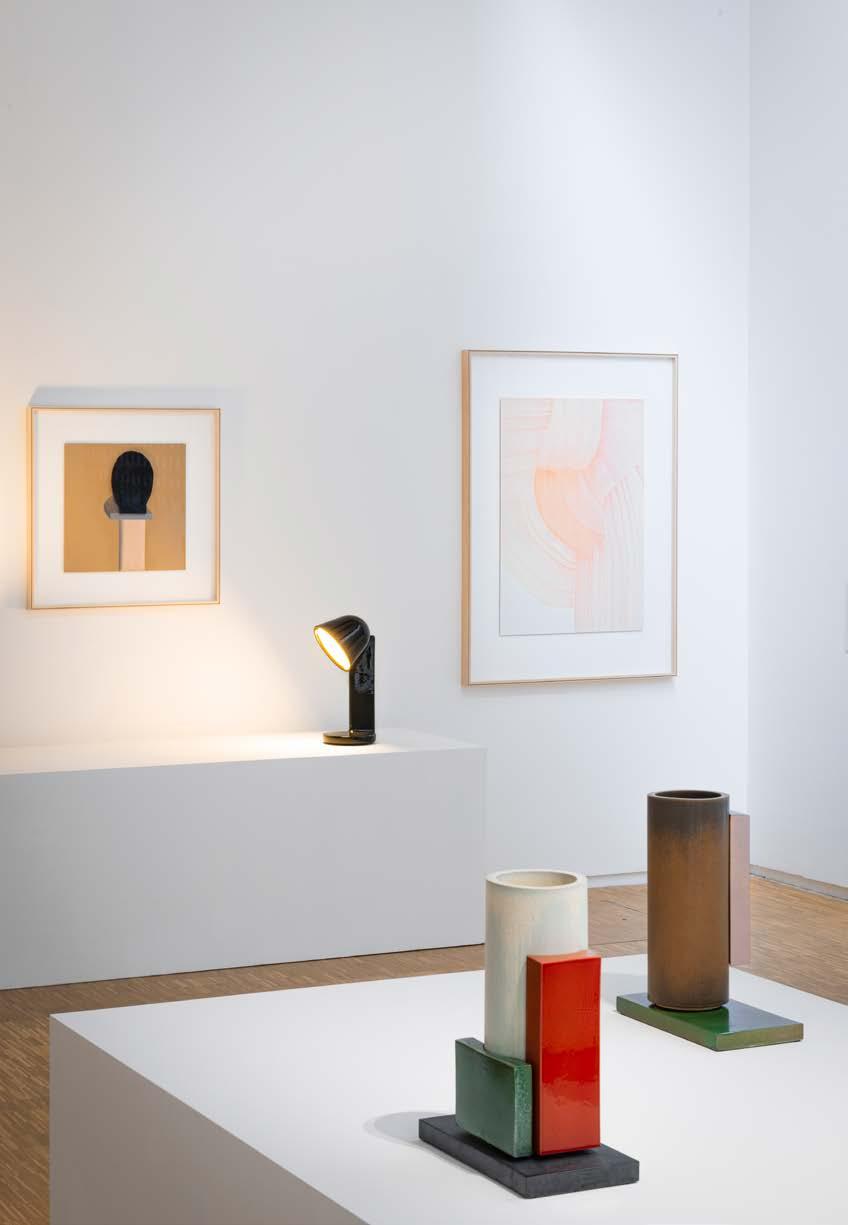
Does this approach help you discover novelty?
That naivete allows me to resist applying a formulaic solution that I already know could work for a project. Instead, I quite like to restart from a new point every time. Of course, there is a certain language, and I'm happy with that, but I don't want to be a prisoner of the language, a prisoner of my knowledge.
After so many projects, so many discussions, and so many visits I become an expert. So the question is, how to keep a certain freshness?
Some level of expertise is natural, you have been very prolific
I started very young, I was 18 when I did my first exhibition. Those first 15 years were amazing. I always thought that the companies I worked with had made some kind of casting error, because I came from the countryside, which was very far from lot of these things.
But I like this position of discovering something and being really fresh. So I consciously try to keep this alive, I want to understand up to a certain point, but avoid understanding too much.
For me, design is not a question of style. It is a question of understanding of material and of purpose.


Has the world of design, and people's appreciation of it, changed a lot in the time you've been working?
There are two aspects to this. The first thing is about what we think of as design. This discipline is always considered as starting in England, when industry really got under way in the 19th century. A new approach to making objects appeared and this is supposed to be the starting point of design.
But for me, I feel that I am linked to a longer history. I think that everything that has been built – at any point – is the subject of design. So I feel that everything that didn't grow by itself or was not pre-existing on this planet is the subject of design. I participate in this long history of objects.
The other thing is that, today, 'design' is used as an adjective. We speak about a 'design chair'. This means that there must also be a non-design chair! So, design is often used as a hook for communication.
In France, the term design is everywhere, and I feel, again, not really connected to this. Because for me, when we speak about a 'design chair' or 'design toothbrush', it is very often the worst chair and the worst toothbrush.
For me, design is not question of style. It is a question of understanding of material and of purpose.
Kawara, chair detail, Koyori
© Hiroshi Iwasaki
Kawara, chair and table, Koyori
© Claire Lavabre – Studio Bouroullec
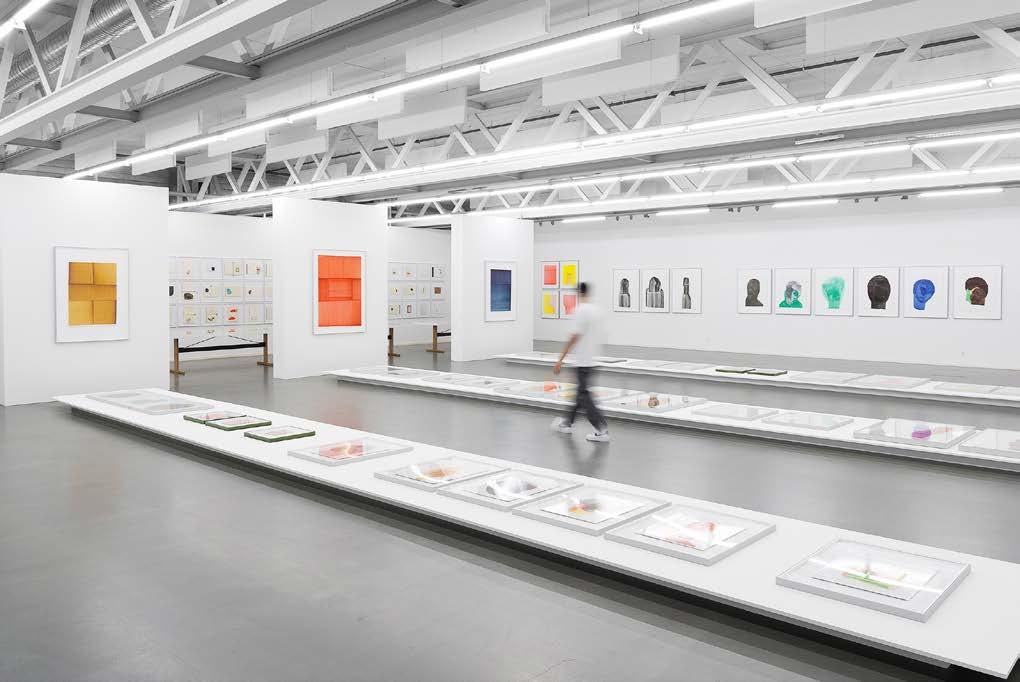
Do consumers have a better understanding of design these days?
I don't know if people understand objects better than they did before, because it's so easy to acquire things now. Previously, you needed to save to buy things. So, in the past, you had to be very conscious of what you decided to have around you.
The relationship with objects was very different too, because the cycle was longer. You would repair things. They do not repair anymore. So, I think people understand less and less how objects are made. For example, we are no longer able to name the type of wood from which our furniture is constructed.
It depends on the country though. In Japan, it's the extreme opposite. People have a very strong cultural connection to material and technique. But if I consider Europe and America, we are less and less connected.
So, maybe people understand a bit more what design means as a word. But I don't know if people understand more about the objects themselves .
Dessins Quotidiens, exhibition, ECAL, Lausanne
© Marvin Merkel
So, when designing for others, what do you focus on?
A lot of aspects. The comfort, the beauty, the quality of a curve, the quality of touch. For example, what makes an armrest sensual or not? There are many aspects to consider, and some of them, of course, are contradictory.
My pleasure and my goal is to find an object that I've designed in a flea market, in good condition. It's like a routine for me, when I'm working on a new object, when I draw. I wonder, what would it mean for this thing to be dirty? What will it be like with the patina of age on it?
I like old objects a lot. So I try to anticipate what the patina will be like on the objects I create. If I use a certain type of wood, or a color on the wood. What will it mean when the color starts to fade? What will be the contrast between the colors that remain strong and those that fade? And if I use plastic, I need to be sure that it will last for a very long time, so, what type of plastic, and what color? As a material, plastic doesn't like to be dirty. If the color is too light, it can become a nightmare. Then there's the texture of the plastic, how does the dust sit on it? All these aspects interest me a lot.


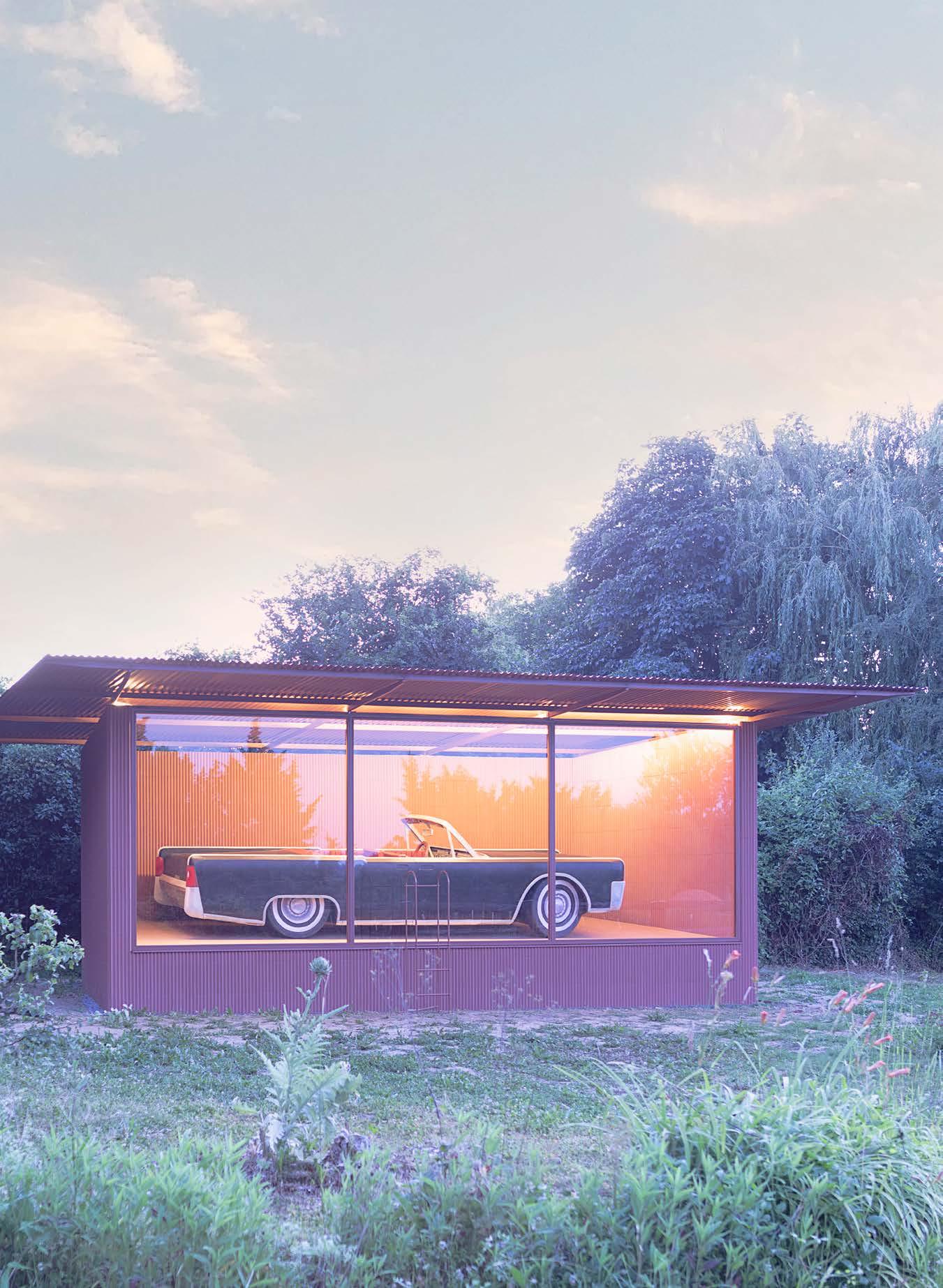

Do you hold on to your prototypes long enough to see how they age?
It's more by observation, by observing things everywhere. Considering the beauty of a chair in a cafe, the floor, the counter. What does it mean to use zinc or ceramic on a certain surface and wood on others? Very, very pragmatic things. And a lot of walking through flea markets in the morning.
You know, we speak a lot about recycling. But for me, the question is more about the lifecycle, the cycle of time. How long is this cycle? This object, is it robust enough? But at same time, is it delicate enough? There always needs to be this balance. It's like cooking. You can use the best meat and the best vegetables but if you put too much salt in your meal, it will be terrible. If you get the balance right, you arrive at a sort of grace, or delicacy.
Lincoln Pavilion, Piacé le radieux, France
© Studio Bouroullec
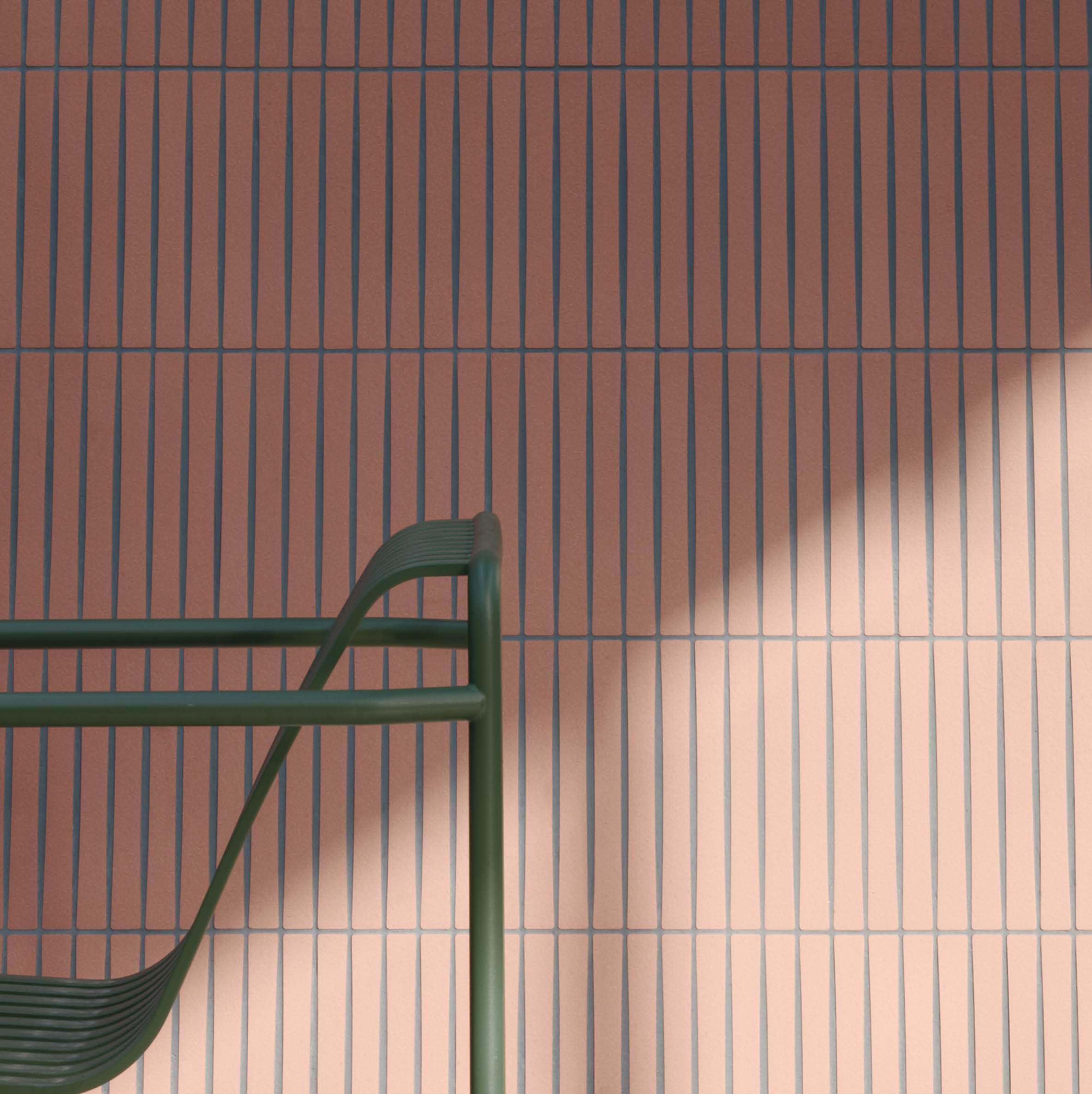
I feel like a bird that is circling around an idea, taking in different angles.

Osso, ceramic tiles, Mutina
© Gerhardt Kellermann
Camini, vase, Mutina
© Gerhardt Kellermann
Of your own products, is there anything that you keep at home?
Any favorite children?
I've started to be a bit more relaxed about that lately. Before, I couldn't live with the objects I was designing. I'm too critical. If I make an object, I think it's good at a certain point in time, but very quickly I start to wonder what it would have been like if it had been done a bit differently. So it was too difficult for me to be surrounded by my own objects.
After all, I'm sure musicians don't always listen to their own albums! So, I was happy to be surrounded by my student stuff that moved with me from apartment to apartment. But, some years ago, I started to keep the objects I design around me.
There's good and bad to this. Good, because I can continue to study them. And bad, because as a designer, I need flat, empty pages surrounding me. I like objects around me with a certain silence. But it's not always good to design a silent object. Because of this, I don't like to consider just myself as the future user, the future owner of the piece.



Passage, chair, Kettal
© Gerhardt Kellermann
Drawing, 2022
© Claire Lavabre – Studio Bouroullec
Lithographs, Muji-IDÉE
© Ronan Bouroullec

How do you start a new work?
Do you draw, or do you model things?
It's has changed over the years. In the beginning, I would fill almost a sketchbook per day. I would do tons of repetitions of a curve, always trying to understand what I had in mind, how to connect things. I needed to draw it, to understand it. The idea was perhaps a bit blurry in my mind, and drawing is an extraordinary tool for figuring out what you have in mind.
Now I have a certain catalog of things in my mind that I can figure quite precisely. So I draw less. I try to work with more focus. One designer who is important for me, is Vico Magistretti. He died almost 20 years ago, but he said that a good project is something that you can explain over the phone. So, very often I call my assistants, who have many different skills, to explain exactly what I have in mind. They've worked with me for ten years or more, so they know how to translate this into objects.
I continue to spend time drawing if there's something that is already quite clear in my mind. I use my iPhone for this too. My assistants never draw for me, or start a project for me, but they start to turn around my ideas, doing mockups, making test files.
Using 3D printing is very interesting too, because if you specify a file one day it can be ready for you the next. It's like having a fresh croissant waiting for you when you arrive in the studio each morning.
With this process, I feel like a bird that is circling around an idea, taking in different angles. And at a certain point, I dive, the project is completed.

Where do you find the quiet time?
I have a quiet life. I don't travel so much. Recently, I was in Japan and in New York, but I try not to travel much. I hate having meetings! I spend a lot of time discussing things by phone, or video chat, sometimes.
I exchange sketches with craftsmen and collaborators, then we exchange a prototype. I used to travel a lot to check prototypes, but now the prototypes are doing the traveling.
Very often, people find it hard to understand how I can work on 30 projects at the same time. But they are all in different stages of development. Some of them are in the photography studio, some are just on paper, others are mockups.
That does sound like a lot!
If you consider that a project could be a system or collection built around the same idea, so it could be 10 or more objects. Right now, I'm working on a new system for a sofa, and at the same time, I'm exploring this old glass fusing technique. With that I'm designing different lamps, but all based on the same technical principle.
You mentioned systems which encompass a single project. But, does your work fit together into a larger picture?
It depends. If you look carefully at every project I've done, I think the language is very often linked to the way things are built. How one material connects to another. The invention of it, or the delicacy of it, how to connect things together.
When I start a project, I always begin with a detail, very often a connection. But when I start to physically think about an object, I always develop a constructive approach, looking for a way to build the thing.
When objects are conceived like that, you often find a connecting principle, and from this you can create several solutions. A good example of this, because it's still a best seller after 13 years, is an outdoor furniture collection called Palisade. This is made of delicate tubing, both round and rectangular. I precisely designed this rhythm with the tubes, and it worked for a lot of different typologies. There's a chair, a table and so on. But this language, this technical approach – the welding – allowed us to do perhaps 20 different pieces. And because the language is iconic, you immediately connect each piece to this collection.
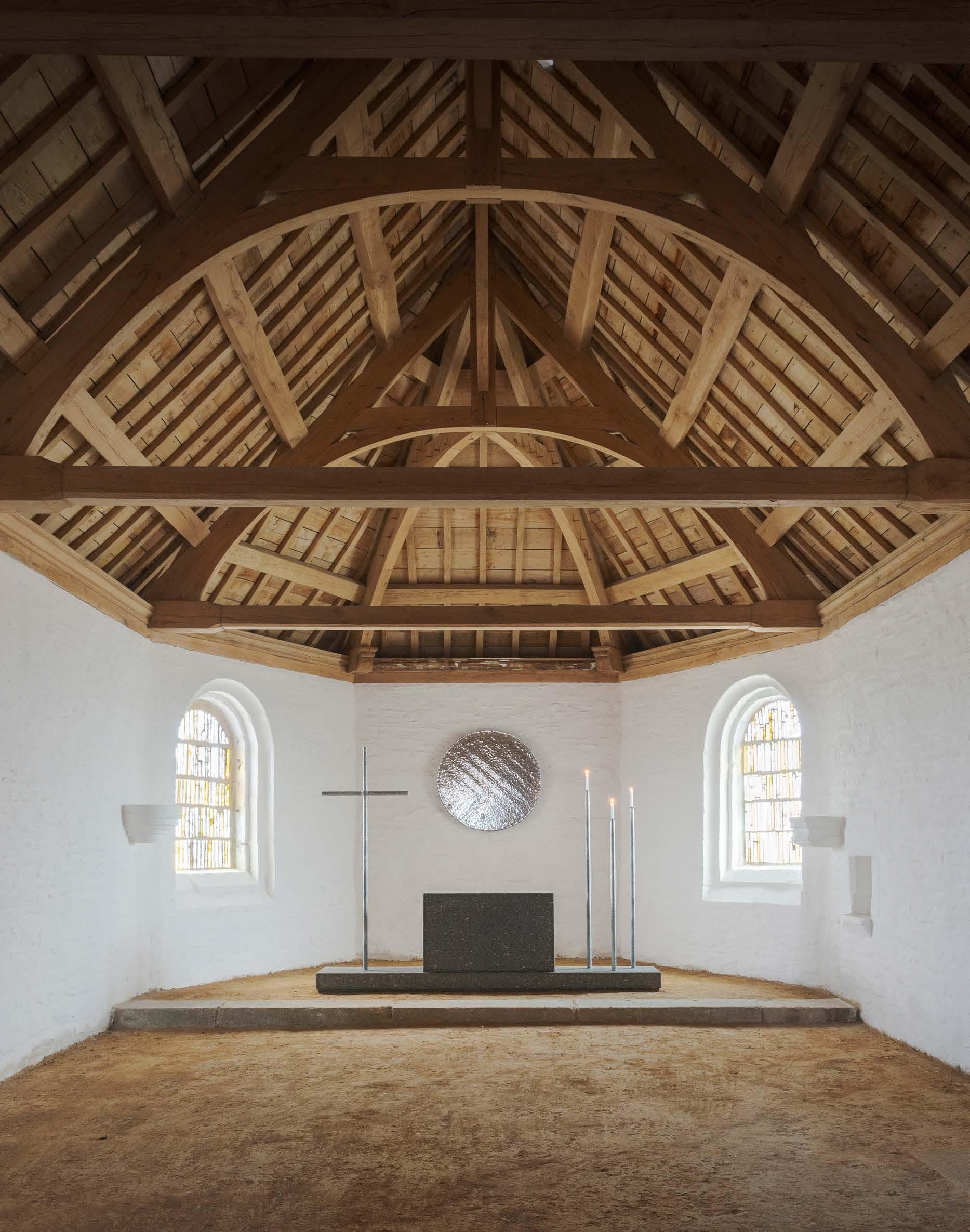
Lithographs, Muji-IDÉE
© Claire Lavabre –
Studio Bouroullec
Chapelle Saint-Michel de Brasparts
© Claire Lavabre –Studio Bouroullec
Do you work digitally?
I always use the same tools – my mind, a pen, and now my iPhone, because I draw and communicate a lot with my iPhone. But I do not use a computer very much, except to check my mail or to look things up on the internet. I don't use a 3D program or Photoshop or Illustrator.
Do you worry that the machine will get in the way?
There are so many ways to be a creative person, so I don't know about that. For example, Jasper Morrison, a designer I love and respect a lot, doesn't do so many mockups. And I remember, some years ago, visiting a Japanese design studio, and there was just a computer and a printer. Here, everything is covered in dust, and there are mockups everywhere. But I respect all the different ways to engage with and try to solve a project.
You just happen to favour a hands-on, iterative approach?
When I start something, I spend a lot of time in the studio. I like to be surrounded by the work. Each morning, I like to have something coming back from the workshop for me to see. And I'm surrounded by assistants that have many different skills, from textiles and ceramics to 3D design and print specialists… It's a small team, but passionate and dedicated. They have a good rapport with me, so I don't explain too much. I ask for a lot of tests and a lot of mockups. And, naturally, the act of doing things modifies the direction of the work.


I don't want to be a prisoner of the language, a prisoner of my knowledge.


Your work with 'galerie kreo', how does that fit into the equation?
There are so many ways to make objects. I'm fascinated by craft and I'm fascinated by machines. The problem for craft is that it's a treasure which is disappearing, like rare birds. And for me, it's very important to continue to feed them. It's the beauty of this world. And when a technique disappears, it's like colors that disappear. But I realize that the only way to make them survive is for them to be confronted with new ideas and they need to be economically viable.
Today, there are two economic possibilities. One is to design objects for almost everybody at a very low price. This is hard to achieve, but this is something that interests me. It means that objects I design can be bought by my friends who are not rich people.
On the other hand, craft is a matter of time and of complexity. So, the economic field for that is a gallery, given the time cost and the technique cost. So for me, the gallery is more the way to test things, like in haute couture. I'm trying to discover things I like. In fact, I just closed an exhibition linked to some liturgical furniture I designed for the Saint-Michel de Brasparts Chapel in Brittany.
Dessins Quotidiens, exhibition, Hôtel des Arts, Toulon, France
© Studio Bouroullec
Exhibition, galerie kreo, Paris
© Alexandra de Cossette
Flou, miror, galerie kreo
© Alexandra de Cossette

The range of your work is very broad, from jewelry to industrial and office spaces. Where is your focus at the moment?
For me, there is no hierarchy between projects. If I decide to do an ashtray or I'm trying to work on an urban project, I put the same intensity into it. So, right now, I'm interested in some particular techniques, by the poetry and transparency of one colored glass melting into another. And maybe around the question of language, the poetry of objects, but I'm looking for a new subject.
I was lucky to have been invited by Issey Miyake, three years ago, to collaborate with their design team. Together we created a collection of 80 different pieces that has been a huge success. It was very interesting to be in another field, it was a great pleasure. But I am still circling, looking for a new field where I could be almost like a student, and make new discoveries.



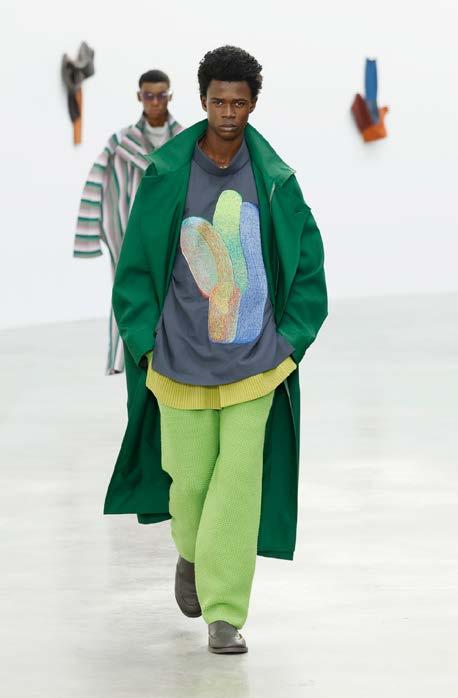
Immersed in the Wilds of Creativity, garment collection, Issey Miyake
© ISSEY MIYAKE INC.
Design Friends would like to thank all their members and partners for their support.
COLOPHON
PUBLISHER Design Friends
COORDINATION Heike Fries
LAYOUT Olga Silva
INTERVIEW Mark Penfold
PRINT Imprimerie Schlimé
PRINT RUN 250 (Limited edition)
ISBN 978-2-919829-07-1
PRICE 5 €
DESIGN FRIENDS
Association sans but lucratif (Luxembourg)
BOARDMEMBERS
Anabel Witry (President)
Guido Kröger (Treasurer)
Heike Fries (Secretary)
Vera Heliodoro, Reza Kianpour, Hyunggyu Kim (Members)
COUNSELORS
Zoë Mondloch, Hyder Razvi, Olga Silva, Silvano Vidale
WWW.DESIGNFRIENDS.LU @RONANBOUROULLEC
Support Design Friends, become a member. More information on www.designfriends.lu
Design Friends is financially supported by
This catalogue is published for the lecture of Ronan Bouroullec "Variety, ideas and inspirations" at Mudam Luxembourg on 15th of January, 2025 organised by Design Friends.

